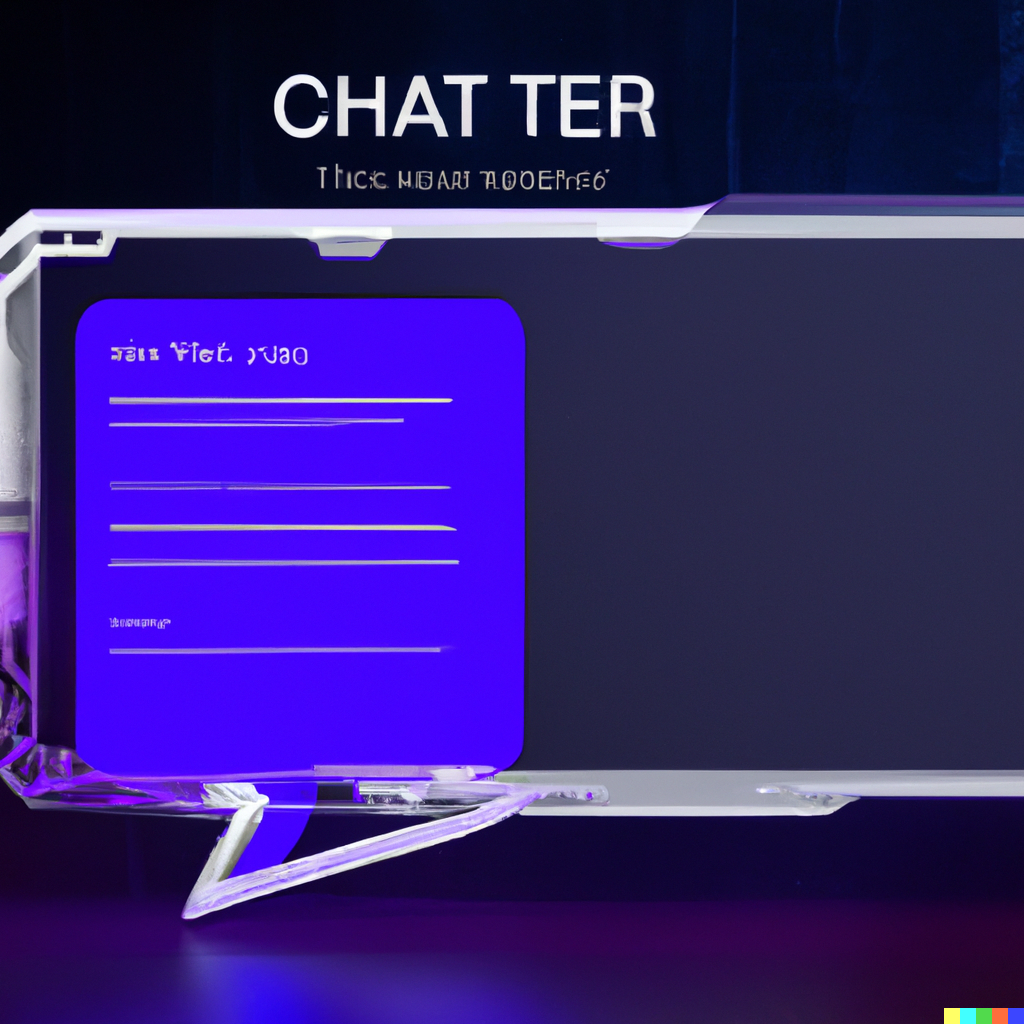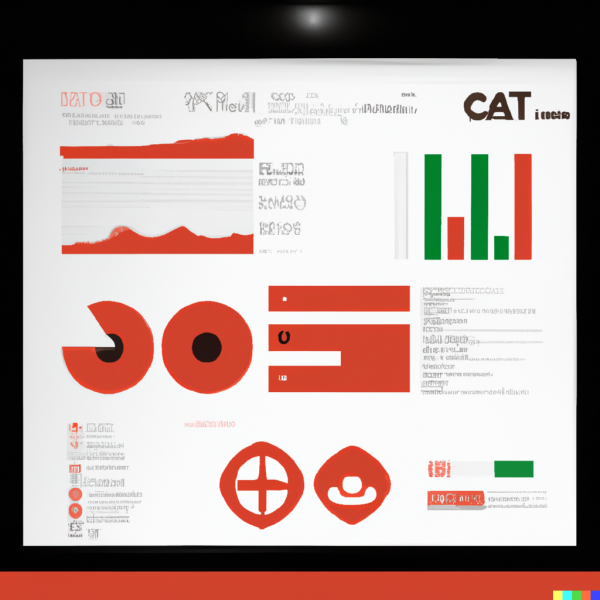Introduction to using ChatGPT for chatbot training data
As Authored by ChatGPT
Natural language processing (NLP) is a field of artificial intelligence that focuses on enabling machines to understand and generate human language. Training data is a crucial component of NLP models, as it provides the examples and experiences that the model uses to learn and improve. In this article, we will introduce ChatGPT, a large language model trained using GPT-3 technology, and discuss its capabilities for generating human-like text that can be used to create training data for NLP tasks. We will also explore how ChatGPT can be fine-tuned to improve its performance on specific tasks or domains. Overall, this article aims to provide an overview of ChatGPT and its potential for creating high-quality NLP training data for Conversational AI.
Brief overview of ChatGPT and its capabilities
ChatGPT is a, unsupervised language model trained using GPT-3 technology. It is capable of generating human-like text that can be used to create training data for natural language processing (NLP) tasks. ChatGPT can generate responses to prompts, carry on conversations, and provide answers to questions, making it a valuable tool for creating diverse and realistic training data for NLP models.
Additionally, ChatGPT can be fine-tuned on specific tasks or domains to further improve its performance. This flexibility makes ChatGPT a powerful tool for creating high-quality NLP training data.
Explanation of how ChatGPT can be used to generate large amounts of high-quality training data for chatbots
One way to use ChatGPT to generate training data for chatbots is to provide it with prompts in the form of example conversations or questions. For example, if we are training a chatbot to assist with customer service inquiries, we could provide ChatGPT with prompts such as generate twenty phrases for "How can I return a product?" or "What is your return policy?". ChatGPT would then generate phrases that mimic human utterances for these prompts.
These generated responses can be used as training data for a chatbot, such as Rasa, teaching it how to respond to common customer service inquiries. Additionally, because ChatGPT is capable of generating diverse and varied phrases, it can help create a large amount of high-quality training data that can improve the performance of the chatbot.
Another way to use ChatGPT for generating training data for chatbots is to fine-tune it on specific tasks or domains. For example, if we are training a chatbot to assist with booking travel, we could fine-tune ChatGPT on a dataset of travel-related conversations. This would allow ChatGPT to generate responses that are more relevant and accurate for the task of booking travel.
Benefits of generating diverse training data
The ability to generate a diverse and varied dataset is an important feature of ChatGPT, as it can improve the performance of the chatbot.
A diverse dataset is one that includes a wide range of examples and experiences, which allows the chatbot to learn and adapt to different situations and scenarios. This is important because in real-world applications, chatbots may encounter a wide range of inputs and queries from users, and a diverse dataset can help the chatbot handle these inputs more effectively.
For example, if a chatbot is trained on a dataset that only includes a limited range of inputs, it may not be able to handle inputs that are outside of its training data. This could lead to the chatbot providing incorrect or irrelevant responses, which can be frustrating for users and may result in a poor user experience.
On the other hand, if a chatbot is trained on a diverse and varied dataset, it can learn to handle a wider range of inputs and provide more accurate and relevant responses. This can improve the overall performance of the chatbot, making it more useful and effective for its intended task.
ChatGPT is capable of generating a diverse and varied dataset because it is a large, unsupervised language model trained using GPT-3 technology. This allows it to generate human-like text that can be used to create a wide range of examples and experiences for the chatbot to learn from. Additionally, ChatGPT can be fine-tuned on specific tasks or domains, allowing it to generate responses that are tailored to the specific needs of the chatbot.
Reduce time and resources
The potential to reduce the time and resources needed to create a large dataset manually is one of the key benefits of using ChatGPT for generating training data for natural language processing (NLP) tasks.
Creating a large dataset for training an NLP model can be a time-consuming and labor-intensive process. Typically, it involves manually collecting and curating a large number of examples and experiences that the model can learn from. This process can be particularly challenging when the dataset needs to be diverse and varied, as it requires a large amount of effort and expertise to create a dataset that covers a wide range of scenarios and situations.
However, ChatGPT can significantly reduce the time and resources needed to create a large dataset for training an NLP model. As a large, unsupervised language model trained using GPT-3 technology, ChatGPT is capable of generating human-like text that can be used as training data for NLP tasks. This allows it to create a large and diverse dataset quickly and easily, without the need for manual curation or the expertise required to create a dataset that covers a wide range of scenarios and situations.
Creating data that is tailored to the specific needs and goals of the chatbot
The ability to create data that is tailored to the specific needs and goals of the chatbot is one of the key features of ChatGPT. Training ChatGPT to generate chatbot training data that is relevant and appropriate is a complex and time-intensive process. It requires a deep understanding of the specific tasks and goals of the chatbot, as well as expertise in creating a diverse and varied dataset that covers a wide range of scenarios and situations.
First, the system must be provided with a large amount of data to train on. This data should be relevant to the chatbot's domain and should include a variety of input prompts and corresponding responses. This training data can be manually created by human experts, or it can be gathered from existing chatbot conversations.
One of the challenges of training a chatbot is ensuring that it has access to the right data to learn and improve. This involves creating a dataset that includes examples and experiences that are relevant to the specific tasks and goals of the chatbot. For example, if the chatbot is being trained to assist with customer service inquiries, the dataset should include a wide range of examples of customer service inquiries and responses.
Once the training data has been collected, ChatGPT can be trained on it using a process called unsupervised learning. This involves feeding the training data into the system and allowing it to learn the patterns and relationships in the data. Through this process, ChatGPT will develop an understanding of the language and content of the training data, and will be able to generate responses that are relevant and appropriate to the input prompts.
However, unsupervised learning alone is not enough to ensure the quality of the generated responses. To further improve the relevance and appropriateness of the responses, the system can be fine-tuned using a process called reinforcement learning. This involves providing the system with feedback on the quality of its responses and adjusting its algorithms accordingly. This can help the system learn to generate responses that are more relevant and appropriate to the input prompts.
Ensuring Training Data Quality
To ensure the quality and usefulness of the generated training data, the system also needs to incorporate some level of quality control. This could involve the use of human evaluators to review the generated responses and provide feedback on their relevance and coherence.
To ensure the quality of the training data generated by ChatGPT, several measures can be taken.
First, the input prompts provided to ChatGPT should be carefully crafted to elicit relevant and coherent responses. This could involve the use of relevant keywords and phrases, as well as the inclusion of context or background information to provide context for the generated responses.
Additionally, the generated responses themselves can be evaluated by human evaluators to ensure their relevance and coherence. These evaluators could be trained to use specific quality criteria, such as the relevance of the response to the input prompt and the overall coherence and fluency of the response. Any responses that do not meet the specified quality criteria could be flagged for further review or revision.
In addition to manual evaluation by human evaluators, the generated responses could also be automatically checked for certain quality metrics. For example, the system could use spell-checking and grammar-checking algorithms to identify and correct errors in the generated responses.
Overall, a combination of careful input prompt design, human evaluation, and automated quality checks can help ensure the quality of the training data generated by ChatGPT.
How to Fine Tune ChatGPT for Training Data
There are several ways that a user can provide training data to ChatGPT.
First, the user can manually create training data by specifying input prompts and corresponding responses. This can be done through the user interface provided by the ChatGPT system, which allows the user to enter the input prompts and responses and save them as training data.
Second, the user can gather training data from existing chatbot conversations. This can involve collecting data from the chatbot's logs, or by using tools to automatically extract relevant conversations from the chatbot's interactions with users.
Third, the user can use pre-existing training data sets that are available online or through other sources. This data can then be imported into the ChatGPT system for use in training the model.
Overall, there are several ways that a user can provide training data to ChatGPT, including manually creating the data, gathering it from existing chatbot conversations, or using pre-existing data sets.
Example Training for a Hotel Chatbot
If you want to launch a chatbot for a hotel, you would need to structure your training data to provide the chatbot with the information it needs to effectively assist hotel guests.
One way to do this would be to create a set of input prompts that cover a wide range of common questions and requests that hotel guests might have. For example, you could include prompts such as:
"What time is check-in and check-out?" "How do I book a room?" "What amenities does the hotel offer?" "Where is the hotel located?" "What are the cancellation policies?"
For each of these prompts, you would need to provide corresponding responses that the chatbot can use to assist guests. These responses should be clear, concise, and accurate, and should provide the information that the guest needs in a friendly and helpful manner.
In addition to these basic prompts and responses, you may also want to include more complex scenarios, such as handling special requests or addressing common issues that hotel guests might encounter. This can help ensure that the chatbot is able to assist guests with a wide range of needs and concerns.
Overall, the key to creating effective training data for a hotel chatbot is to provide a comprehensive set of input prompts and corresponding responses that cover a wide range of common questions and concerns that hotel guests might have. By doing so, you can ensure that your chatbot is well-equipped to assist guests and provide them with the information they need.
Real-world examples of how ChatGPT has been used to create high-quality training data for chatbots
Recently, there has been a growing trend of using large language models, such as ChatGPT, to generate high-quality training data for chatbots. This has proven to be a valuable approach for several reasons.
First, using ChatGPT to generate training data allows for the creation of a large and diverse dataset quickly and easily. This is particularly useful for organizations that have limited resources and time to manually create training data for their chatbots.
Second, the use of ChatGPT allows for the creation of training data that is highly realistic and reflective of real-world conversations. As a result, the training data generated by ChatGPT is more likely to accurately represent the types of conversations that a chatbot may encounter in the real world.
One example of an organization that has successfully used ChatGPT to create training data for their chatbot is a leading e-commerce company. The company used ChatGPT to generate a large dataset of customer service conversations, which they then used to train their chatbot to handle a wide range of customer inquiries and requests. This allowed the company to improve the quality of their customer service, as their chatbot was able to provide more accurate and helpful responses to customers.
Another example of the use of ChatGPT for training data generation is in the healthcare industry. A hospital used ChatGPT to generate a dataset of patient-doctor conversations, which they then used to train their chatbot to assist with scheduling appointments and providing basic medical information to patients. This allowed the hospital to improve the efficiency of their operations, as the chatbot was able to handle a large volume of requests from patients without overwhelming the hospital's staff.
Challenges and Benefits
The use of ChatGPT to generate training data for chatbots presents both challenges and benefits for organizations.
One of the challenges of using ChatGPT for training data generation is the need for a high level of technical expertise. This is because using ChatGPT requires an understanding of natural language processing and machine learning, as well as the ability to integrate ChatGPT into an organization's existing chatbot infrastructure. As a result, organizations may need to invest in training their staff or hiring specialized experts in order to effectively use ChatGPT for training data generation.
Despite these challenges, the use of ChatGPT for training data generation offers several benefits for organizations. The most significant benefit is the ability to quickly and easily generate a large and diverse dataset of high-quality training data. This is particularly useful for organizations that have limited resources and time to manually create training data for their chatbots.
Another benefit is the ability to create training data that is highly realistic and reflective of real-world conversations. This is because ChatGPT is a large language model that has been trained on a massive amount of text data, giving it a deep understanding of natural language. As a result, the training data generated by ChatGPT is more likely to accurately represent the types of conversations that a chatbot may encounter in the real world.
In addition, using ChatGPT can improve the performance of an organization's chatbot, resulting in more accurate and helpful responses to customers or users. This can lead to improved customer satisfaction and increased efficiency in operations.




